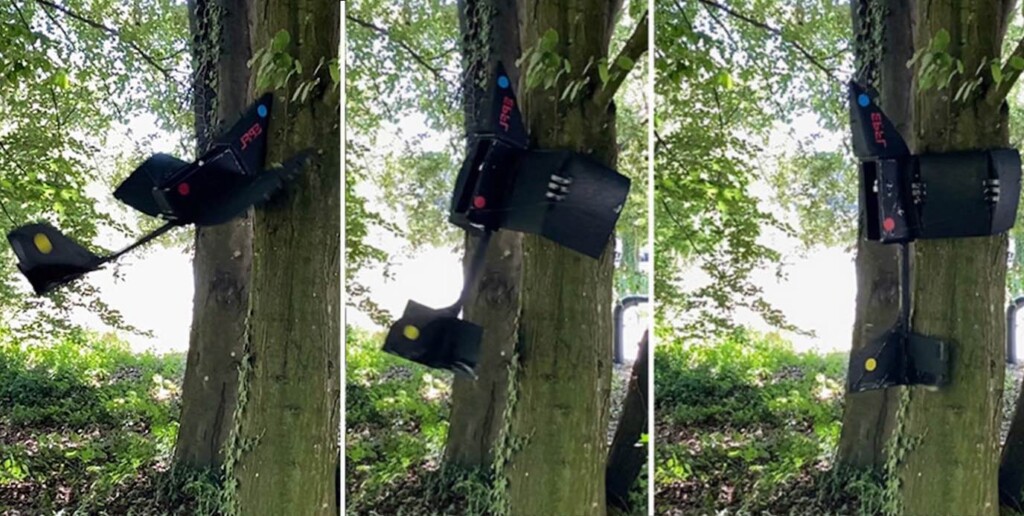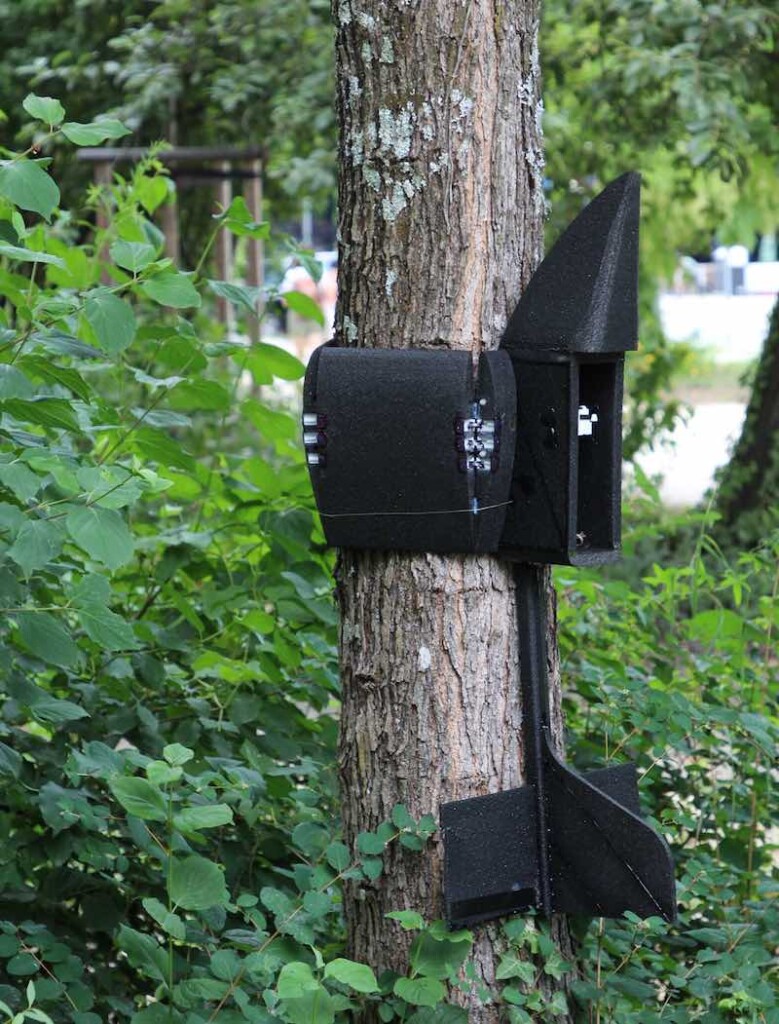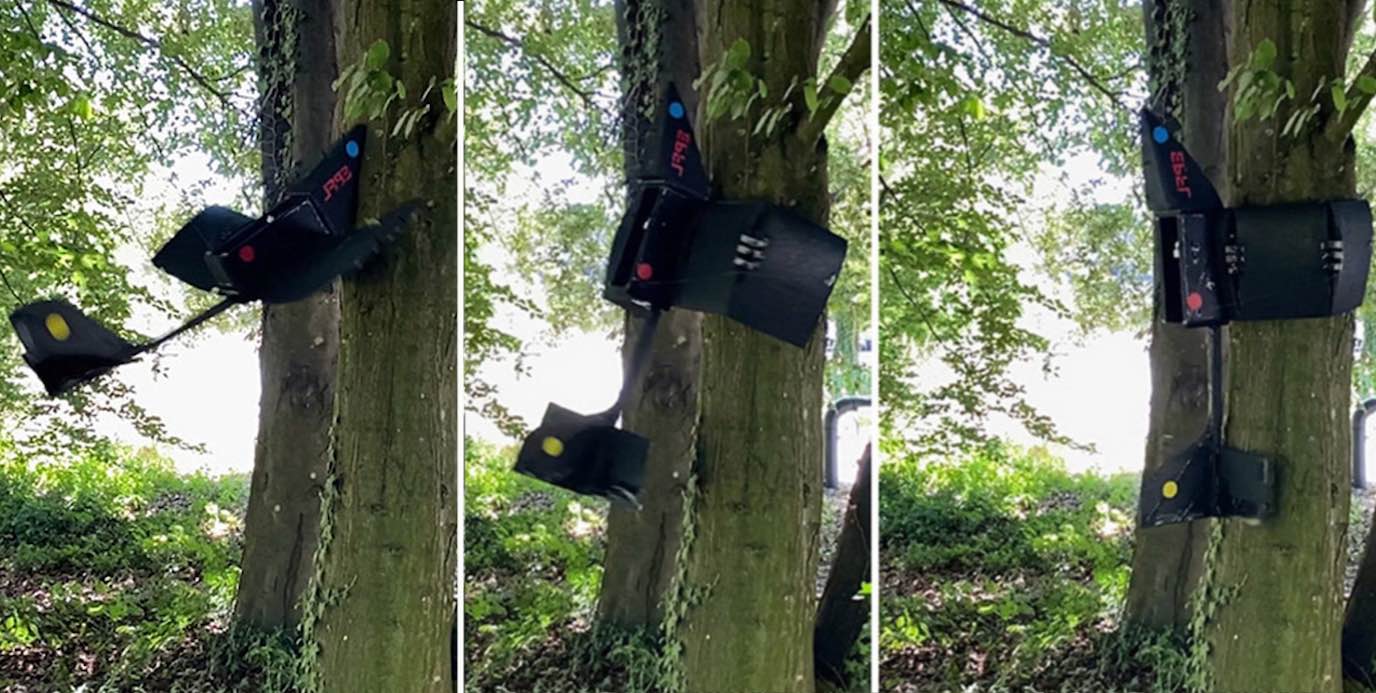
An innovative bat-like drone can fly straight into a tree and perch there, folding its wings around the trunk to hug it and keep it in place.
The glider robot, called PercHug, can also latch onto poles and could be used for inspection, maintenance, and biodiversity conservation.
A team from the Laboratory of Intelligent Systems at the Swiss Federal Institute of Technology (EPFL) say they have taken influence from flying squirrels and geckos, the latter of which exhibits head-first “crash-landing”.
“While flying animals substantially reduce their kinetic energy at landing by wing flapping, specialized gliders, like flying squirrels and geckos, land on trees at high speeds and endure elevated forces utilizing their limbs or head,” explained the researchers.
“We took inspiration from flying geckos, which exhibit head-first crash-landing at speeds.”
The problem of perching using a winged Unmanned Aerial Vehicle has often been solved by means of complex control or intricate appendages.
The team investigated a method that relies on passive wing morphing for crash-landing on trees and other types of vertical poles.
An upturned nose design means the robot can passively reorient from horizontal flight to vertical upon a head-on crash with a pole—followed by hugging with its wings to perch. (See the video at the bottom…)

“Inspired by the adaptability of animals’ and bats’ limbs in gripping and holding onto trees, we design dual-purpose wings that enable both aerial gliding and perching on poles.”
They were able to demonstrate “crash-perching” on tree trunks with an overall success rate of 73%, according to their scientific paper published in the journal Communications Engineering.
DRONES HELP OUT IN WARTIME: Drones Find Dozens of Landmines Littering Ukraine So They Can Be Defused
The team believes their method opens up new possibilities for the use of aerial robots in applications such as inspection and maintenance of poles, and in conservation programs collecting data in the field.
Watch the PercHug video below…




















